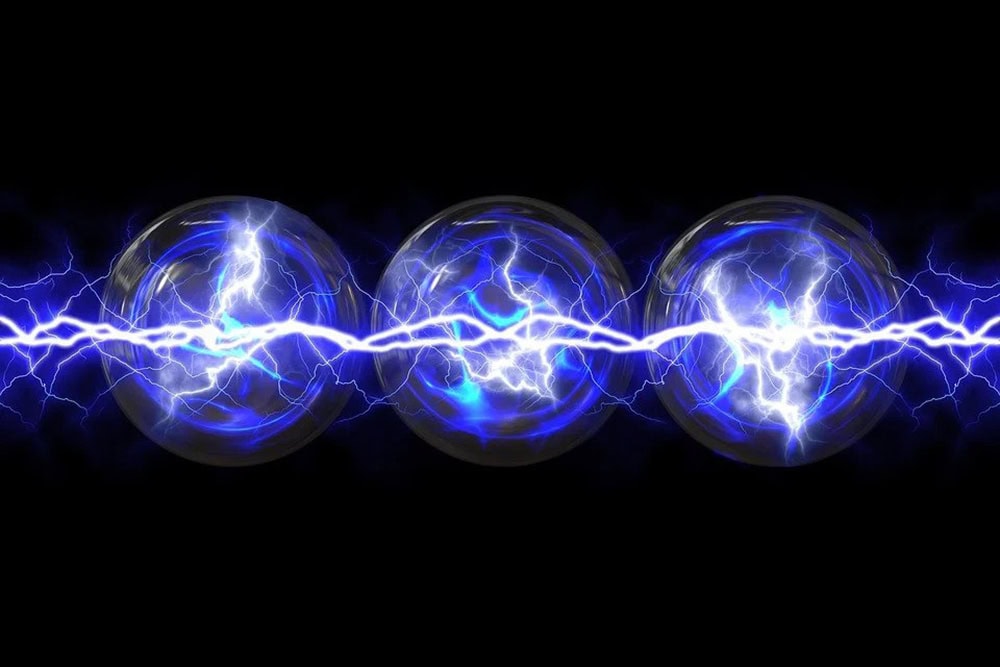
[Image above] Battery current must be converted from direct to alternating for use in many devices—but what if batteries just used alternating current instead? Credit: Pixabay
When it comes to battery research, much focus is on developing safer, more efficient batteries by replacing materials currently used in batteries with different ones, such as swapping polymers for ceramics. However, although different materials are being used, these possible batteries still share a central tenet—the batteries work by transferring electrons via direct current (DC).
In DC, current flows in one direction, while in alternating current (AC), current changes directions many times. Batteries are inherently suited for DC because of their setup—a positively charged electrode (anode) on one side and negatively charged electrode (cathode) on the other. However, many current appliances run on AC power instead.
To power appliances with batteries, you must use a device called an inverter that converts DC to AC. But inverters are not perfect because power is lost during the conversion. For high-quality inverters, loss may be only 5%–10%, but for lower quality inverters, loss can reach up to 25%. Additionally, electricity usually is converted back and forth between AC and DC more than once, further reducing efficiency.
Efficiency would increase if batteries used AC instead, as there would be no loss due to conversion. But how would you alter a battery’s basic anode/cathode design to allow for AC? A University of Cambridge startup thinks it has the answer.
Started in December 2018, AC Biode is developing the “world’s first standalone AC (alternating current) battery and special electric circuits,” according to the company’s website. It claims the battery design would be 30% more compact in terms of volume and have double the lifecycle of DC batteries combined with inverters.
The AC Biode battery eliminates the current conversion by introducing a new type of electrode, called a “biode,” into the battery.
“We developed a biode—a word we created—that can be anode and cathode depending on the current,” Tadashi Kubo, CEO and co-founder of AC Biode, explains in a Cambridge Independent interview. “When we turn on the switch, we put on the battery and the biode and anode will be interacting through electrons. When the switch is off, the biode and cathode will be interacting.”
“[It] is safer because the voltage will be divided by the biode,” Kubo continues. “The difference of each electrode will be two volts instead of four volts.”
The video below gives more details on the biode mechanics.

Credit: Carlos Morales Rozo, YouTube
In addition to reducing volume and increasing lifecycle compared to regular DC batteries, Kubo says the AC battery offers a manufacturing advantage as well.
“We utilize all the existing materials and production lines of batteries and circuits. The production cost of Biode is the same as that of an anode, manufactured by the existing roll-to-roll method,” he explains in a Tech Briefs interview. Also, “The technology is applicable not only to Li-ion batteries but also any type, including all-solid-state batteries.”
In the Tech Briefs interview, Kubo says AC Biode applied for two patents in Japan in 2016 and will apply for two additional patents in Japan and at Patent Cooperation Treaty. Once the company has raised seed funding or received public grants, it will scale the current 20-watt prototype up to around 50 kW.
Once the prototype is scaled up and tested further, “Our first target applications are e-bikes, e-scooters, drones, and small energy storage,” Kubo says in a Business Because article. “Then we will expand to larger scales, including electric vehicles, drones, aerospace, and energy storage for off-grid areas.”
Author
Lisa McDonald
CTT Categories
- Energy
- Material Innovations


